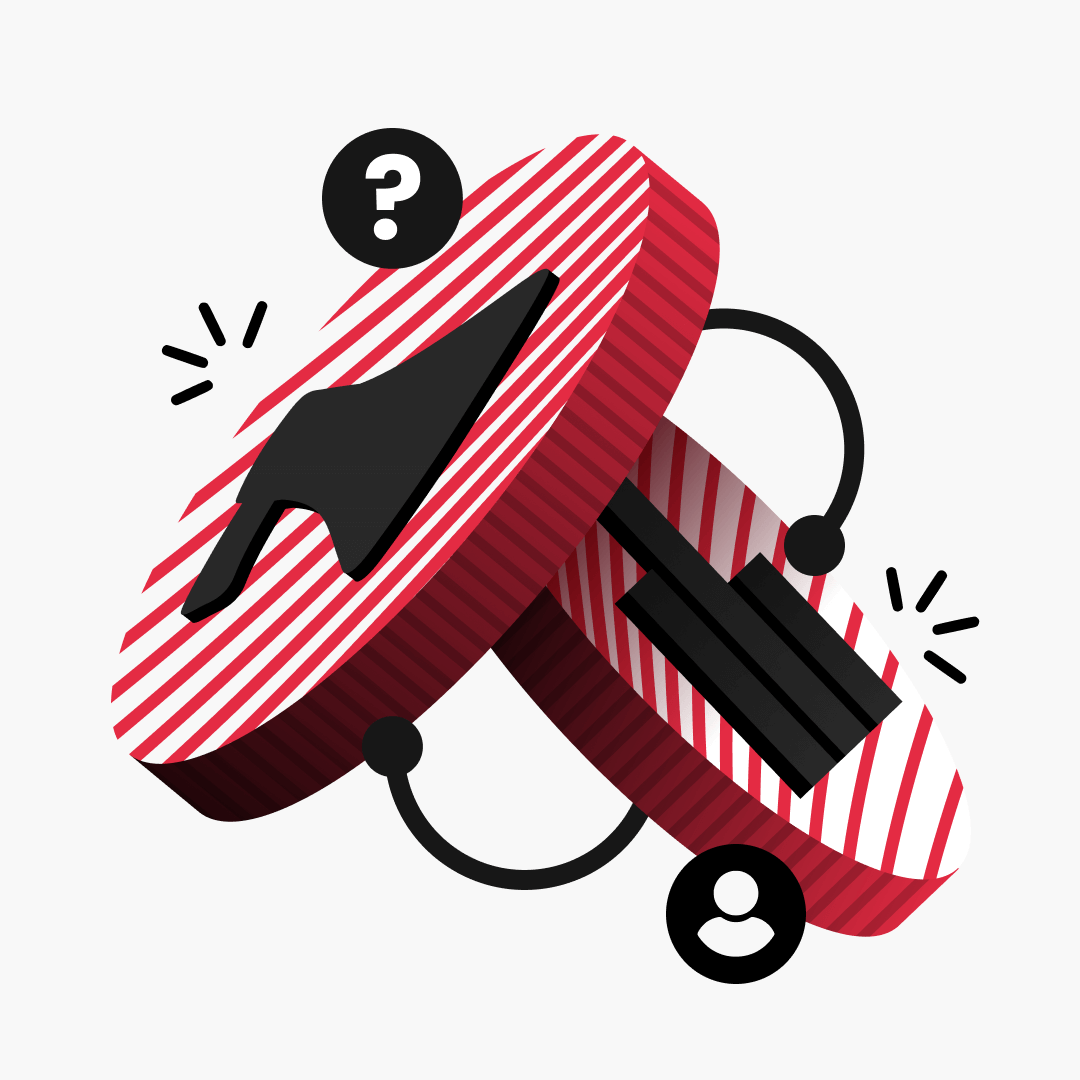Strategic Website Redesign: The Lighthouse For Your Users
Website Redesign Essentials
Redesigning a website is essential in today’s digital landscape, particularly when it comes to positively impacting organic search rankings. The “Lighthouse Effect” concept captures this phenomenon’s essence. Like a lighthouse guiding ships safely through treacherous waters, a well-designed website acts as a beacon, attracting search engines and leading users to relevant content.
A strategically redesigned website can significantly enhance its search engine visibility by incorporating user-friendly navigation, responsive design, and optimized page load speeds. In 2015, Google announced that mobile-friendliness would become a ranking factor in mobile searches. This update, known as “Mobilegeddon,” highlighted the importance of mobile responsiveness in search rankings, which still matters today. Moreover, search engines like Google prioritize websites that highlight user experience, making a strategic website redesign an integral part of any comprehensive SEO strategy.
We’re here to give you our best practices in website redesign to help you achieve ideal organic search results. Read on if you want to improve your website performance and visibility in search engine results. We’ll take you through the process step-by-step.

Why You Should Consider Web Redesigning
Website redesign is like giving your online presence a fresh makeover. It’s a creative process that involves reimagining and revamping your website’s visual design, layout, and overall functionality to make it more engaging and user-friendly. The website redesign process is a way to inject your brand’s personality and uniqueness into every pixel and leave your visitors spellbound by the experience you’ve created. But that was a lyrical digression. Here are the main reasons why you, as a marketer, industry professional, or business owner, should consider a website redesign strategy. For one, redesigning a website with a focus on user experience can result in conversion rate improvements of up to 200%. Next are the others.
New product or service launch
Launching a new product or service calls for integrating new features seamlessly. However, this can be a daunting task for developers and designers who must navigate the intricacies of the redesign process. Sadly, marketing departments overlook the potential risks involved. Each modification during a redesign, even minor alterations such as the headline or navigation bar, can significantly impact conversions.
Consider the sheer volume of adjustments made during a makeover. The headings, images, the navigation bar style, fonts, and more. Some of it may require numerous revisions. How do you tell what will boost your conversions or crush them?
If you’d like, you can push towards launching a minimum viable product (MVP) with limited functionality. This way, you can quickly showcase and check the impact of changes. Beforehand, make sure you’re ready to:
– Monitor progress;
– Connect traffic to revenue metrics;
– Evaluate performance before launching the MVP.
Staying competitive & following design trends
The lifespan of a website varies based on what works best for your unique business. However, 71% of marketers redesign their websites every one to three years, with 1.5 to 2.5 years being the average time. These factors can come into play when planning for a redesign:
Whether the design matches your current goals. Over time, brands gain new perspectives of who they are, why they’re here, and what they’re moving towards. Your website should reflect these changes, however subtle they can be.
Whether your conversions and sales are decreasing. It may be hard to navigate the causes of the drop in conversions, but most of the time, this is linked to functionality and site speed issues. According to 88.5% of web designers, slow loading time is a top reason visitors leave a website. This is extremely important because users generally run through multiple pages during a website visit.
Whether you receive user complaints. Users visit your website to buy services, view content, or get their questions answered. If any of these doesn’t go smoothly, you know what’s at stake.
Web Redesign Process: Steps
Log your current performance metrics
Even before you start planning, first document your website’s current performance metrics. You have to know what works well and needs improvement, and monthly performance data analysis goes a long way. Keep in mind that each metric holds varying significance depending on your redesign goals. We recommend pulling as much data as possible before making any major changes. The four main aspects that should be evaluated meticulously are content, usability, conversions, and SEO. In more detail, you can examine these metrics:
– Number of visits, visitors, and unique visitors;
– Bounce rate;
– Time spent on the website;
– Top-performing keywords;
– Number of pages that receive traffic;
– New leads and form submissions.
We also recommend backing up such parts of your website as blog posts, page texts, and videos. This way, you’ll save the SEO work and won’t lose or have to redo any valuable content. And even if you have to rewrite some of that, you’ll have some touchstones to rely on.

Pin down your goals
The next step is figuring out the “whys” for your website redesign. We’ve listed the possible reasons above, but your decision should always be rooted in your company’s specifics and long-term goals. If it’s something like, “Well, we just want it to look fancier” or “This company just did one,” that’s not enough. The entire redesign process isn’t about looks but about functionality. And that itself requires extensive planning and goal-setting. You could take tie your goals to your current performance metrics, for example:
– Increase the time spent on your website;
– Decrease the bounce rate;
– Attract more visitors and generate more leads;
– Boost page views.
Rework your content & SEO
You can reuse previously done website content if you’d like. But first, an audit is crucial. Assess the quality, relevance, and performance of your existing content, and subgroup the pieces that fit into the new website. Identify outdated or redundant content and then update or remove it during the redesign process. Then, focus on creating a user-centric experience by organizing your content logically and intuitively. Make it easy for visitors to find what they’re looking for and ensure that content is easy to digest by using headings, bullet points, concise paragraphs, and maybe visual cues.
If you choose to write new content, keep this in mind: your audience should have no trouble understanding who you are from the very first time they see your website. Steer them through the pages, showing how your company can solve their concerns and why they should pick you over a competitor. Stay away from complex industry language – we tend to trust people who speak like us. Keeping it professional yet friendly is the sweet spot.
Comprehensive keyword research will help you identify relevant terms and phrases your target audience uses to search for your products or services. Optimize your content by incorporating these keywords naturally into your page titles, headings, meta descriptions, and throughout the body of your content.
Your website’s URL should also include relevant keywords. Ensure that your URLs are descriptive and concise. To preserve SEO value and avoid broken links, ensure proper redirects from old URLs to their corresponding new URLs. Incorporate internal links in your content to help visitors navigate your website easily and establish a hierarchical structure for search engines to crawl and understand your content. This can improve both user experience and SEO by distributing link equity and helping search engines discover and index your content more effectively.
Create a prototype
Based on the goals you’ve set and the metrics analysis, outline the features you want to add or remove on your new website. Are there any new pages, color changes, or navigation items you want to add? Include all of that in your list.
Next step: wireframing and prototyping to visualize and refine the design before development. While wireframing, focus on data hierarchy, content organization, and navigation. Ensure that important elements are easily accessible and prioritize usability. Iterate and gather feedback from stakeholders and potential users. Remember that wireframing focuses on functionality and UX rather than visual design.
Now, with prototyping, the aim is to simulate the final web design layout and user interactions. So, translate the wireframes into digital prototypes using tools like Adobe XD, InVision, or Figma. Include visual design elements, typography, color schemes, and actual content to provide a realistic experience. Pay attention to user flows and interactions. Include interactive elements such as buttons, menus, forms, and animations to simulate user interactions and test usability. Create different screens and states to showcase various scenarios and user journeys within the website – this helps evaluate the design across different devices and breakpoints. Then, test and iterate.
Develop your website
The development phase of a website redesign involves turning the finalized design into a fully functional website. Here are the steps to follow:
-Design-to-code conversion. After breaking down the design into individual components such as headers, footers, and content sections, use HTML, CSS, and JavaScript to translate the design into code. Don’t forget to optimize images and other media for web delivery to minimize loading times and improve performance.
– Front-end development. At this stage, implement the visual and interactive elements of the website. Ensure cross-browser compatibility, testing the website on different browsers and devices to ensure consistent rendering and functionality. Implement responsive design techniques, using media queries and flexible layouts to adapt the website to different screen sizes and orientations.
– Back-end development. This stage deals with the server-side functionality required for your website. If necessary, set up the back-end infrastructure, such as configuring servers, databases, and content management systems (CMS). Any required server-side scripting or programming languages will help handle dynamic content, form submissions, database interactions, and other server-side tasks. You can ensure data security with encryption, input validation, and secure authentication and authorization mechanisms.
– Content migration. If your website redesign involves migrating content from an existing website, ensure that the old content maintains proper formatting, structure, and metadata. Test it to verify content integrity and consistency on the new website.
– Testing & QA. Ideally, thorough testing should follow each stage of the development process, along with security testing, to identify and address any vulnerabilities. Test the website across multiple browsers, devices, and operating systems to address any compatibility issues. Implement user testing to gather feedback on usability and functional testing to ensure all features and interactive elements work as intended. Your code should also be compliant with web standards.
– Launch. We’re at the finish line. Prepare your website for deployment to the live server. Set up hosting and configure domain settings, then transfer the website files and databases to the live server. Having a backup of the previous website version is useful if you ever need to roll back. Launch the redesigned website, and closely monitor its performance and user feedback in the initial period after the launch.

Web Redesign Best Practices
Now that we’re done with the redesign process, let’s quickly go over some best practices.
Easy navigation
A well-designed website is defined by easy navigation. A menu bar that clearly explains what users will find when they click on a page is a perfect example. Directional markers like the header menu and breadcrumbs should be simple to read visually.
Text minimization
On-screen, lengthy text passages often frustrate users. This is especially true for anyone using a tablet or other mobile device to view a website. Most of the time, people open a website with a goal in mind, like purchasing a product. If not, there’s no use in distracting them with all that text anyway. Laconic, informative content that resolves most users’ concerns significantly improves their experience and satisfaction. You can always expand in a company blog, too.
Consistent color scheme & texture
If you think of any big, well-known brands out there, you can probably identify them by their signature colors. Your customized web design can make you just as recognizable. Speaking of texture, using media can help your website look less two-dimensional. You can add texture with the help of visual techniques to deepen your UX, making it immersive.
Accessibility
Consider how your website appears to users with disabilities. Include text transcripts or captions for audio and video content. Make content accessible for people using keyboards instead of mouses to browse websites. Also, avoid using flashes and visual effects that can lead to seizures.
Bold CTA
While your navigation and visual design play a role in turning users into leads, CTAs are where it’s at. Each page of your website should conclude in a way that wins users over and causes them to get interested, reach out, or buy your product. Make your CTA easy to spot, use additional elements to make it stand out, or even create different CTAs for each page. You can get as creative as possible if it works for your goals.
Optimization for mobile
Ever seen a website move to the bottom or shrink when you open it from a smartphone? We don’t want that to happen. A responsive layout that adapts to the device screen size is your best friend.
Most websites utilize breakpoints for responsive design. The web page layout changes at these points to appear better on smaller devices. For example, if a browser has a widescreen aspect ratio, the content is shown horizontally. With a smaller aspect ratio, like the one on smartphones, content is arranged vertically. You can see how a website’s design adapts to different screen sizes if you open a window on your laptop and move it around.

Web Redesign Examples
Let’s look at some brands that stole the show with their memorable website design and got us inspired:
– Slack. Slack redesigned its website in 2020, switching to a minimalist and modern aesthetic. The new design emphasized bold typography, vibrant illustrations, and a simplified user interface. It focused on clear messaging, showcasing the platform’s key features and benefits while maintaining a visually engaging experience.
– Medium. Medium, the popular content publishing platform, went through a redesign in 2017. The new design focused on readability and visual storytelling. It introduced a more immersive reading experience with larger typography, simplified layouts, and visually appealing article previews, enhancing the platform’s appeal to both readers and writers.
– Pinterest. Pinterest underwent a major redesign in 2020, shifting focus to personalized recommendations and improved visual discovery. The new design featured a dynamic grid layout, larger images, and a more intuitive navigation menu. It aimed to enhance content discovery and inspire users with tailored recommendations.
– Adobe. Adobe revamped its website in 2021, highlighting more cohesive and intuitive UX. The new design maintains a consistent visual language across Adobe’s various products and services. It’s focused on improving accessibility, product discovery, and providing comprehensive resources for creatives and professionals.
– GitHub. GitHub updated its website design in 2019, emphasizing simplicity and accessibility. The redesign introduced a streamlined layout, improved navigation, and enhanced search capabilities. It aimed to provide a more intuitive and user-friendly experience for developers and users of the platform.
Summing Up
Businesses, large and small are unique in their own ways, and they deserve to be seen. Before you redesign, ask yourself what the end goal is: capturing more leads, a new audience, or boosting sales? When the goal is clear and the research is done, you’re almost halfway through. The rest of the tasks can be redirected to a skilled agency. There are hundreds to choose from, but you’re lucky to be talking to one good enough. We’re Whales, and we’d love to help you navigate the waters of web design.
Need help crafting a visually stunning & user-friendly website?
Contact




